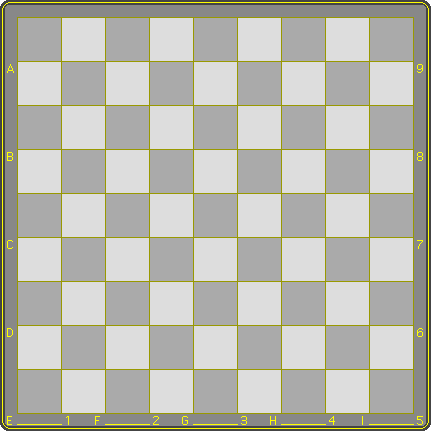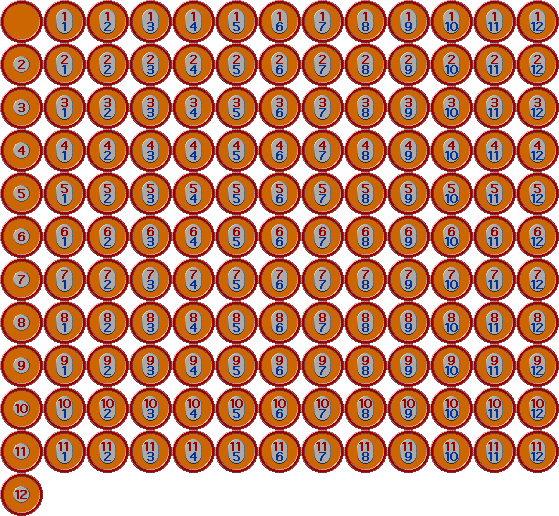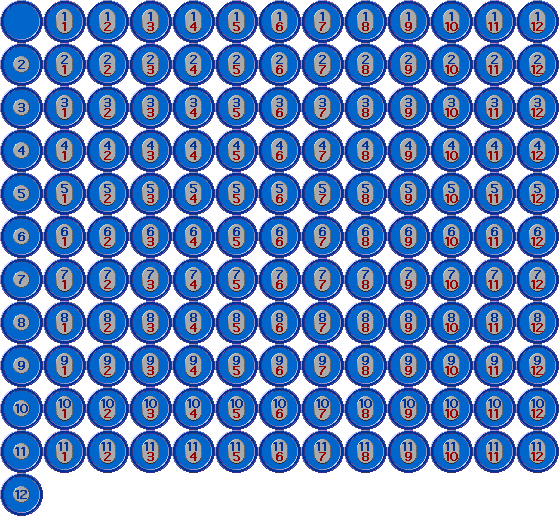Page 2 of 7
Game technical and practical consequences- Kings are represented as a distinct piece that can be recognized as such, whether single, or on top of a stack, or inside a stack.
- Basically all games allow jumping a piece more than once, going roundabout. In games that know precedence of majority capture, this may even determine whether a capture should be made clockwise or anti-clockwise. In Lasca (where only kings can go roundabout) there is no concensus regarding this rule.
- The applets shows stacks in Bashni and Lasca as actual stacks, with kings marked as such on top as well as on the side. Stapeldammen, Emergo and Grabber have no promotion and thus a simpler array of piece composition. Here we've chosen for a numerical representation as the one below.
| Here's an example of the precedence of majority capture, as well as roundabout capture. It is not a game position (because then white would have to enter a man). Pieces in Emergo may move in any direction and there is no promotion. | ||||||||
White moves fe4 and black must take the majority capture hd4x after which white, also under the obligation of majority capture, must capture clockwise (although the applet doesn't enforce it).
Anti-clockwise capture would end on the square of origin and bring only four men. As it is the move ends on c4: white liberates a piece of two and captures five men under a cap of three.
Column Checkers origine, as said, is the Russian Game of Bashni which is just 'Shashki columnified'. The alternate Russian name Stolbovye Shashki (Column Shashki) expresses just that. The column checkers approach can be applied to about any form of Checkers. And the resulting game will usually be well worth delving into. We will address 6 variants: Bashni, Lasca, Stapeldammen, Emergo and its hexversion, and Grabber.





